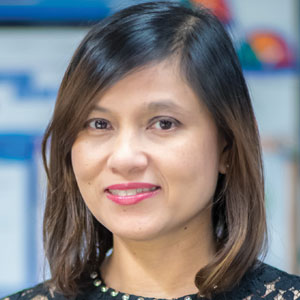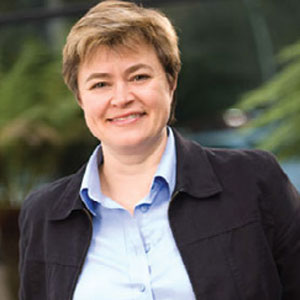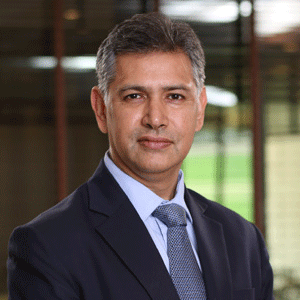THANK YOU FOR SUBSCRIBING

Esri: Driven by The Science of Where

 Jack Dangermond, President
Jack Dangermond, PresidentAlthough believed to be in its infancy, GIS has long aided cities to improve operations and manage their systems of record. It provides the framework and process to bring together and manage all the data into an abstraction that people can understand, visualize, and share. According to Dangermond, “GIS is a framework that allows us to plan the future.”
Owing to the inflating challenges from expanding populations, loss of nature, environmental pollution, and urbanization, the world is growing more unsustainable. These challenges can be addressed if cities are more efficient and better planned by leveraging the best of science, technology, design, and strategy. Esri’s GIS technology propels the world toward a ‘smart’ future.
GIS is being used to implement smart city concepts by connecting, integrating, and exploiting various datasets of a city to create more integrated understanding and management. Its services’ architecture is robust enough to bring together all types of information to support cities that are instrumented, interconnected, and intelligent. While speaking about the inevitability of GIS, Dangermond says, “All citizens, and particularly the next generations that will inherit critical urbanization challenges, need to have an understanding of GIS so that they can engage in applying this system to create solutions for humanity.”
With undeviating focus on creating an evolutionary platform, Esri has delivered a series of sequential products—ArcGIS 10.x— which has been evolving and transforming GIS to suit today’s web services environment.

GIS is a framework that allows us to plan the future
ArcGIS provides contextual tools for mapping and spatial reasoning so that businesses can analyze and visualize data and share location-based insights.
ArcGIS, primarily ArcGIS Online, is largely used in primary and secondary (K-12) schools as an enabling technology that supports inquiry-based education in science, engineering, and math (STEM), social sciences, and humanities. Students use ArcGIS to engage with hands-on activities, such as map reading, collecting environmental data such as water quality, land use investigation, and planning academic trips.
Students are also engaged in geodesign, an activity that harnesses their imagination to create solutions that adjust and adapt to their surroundings to address challenges in their communities. Successful design relies on an adequate knowledge of the geographic conditions and constraints while taking advantage of opportunities. The geodesign land design and planning method couples the creation of design proposals with impact simulations that are informed by geographic contexts, data, and systems thinking.
Esri empowers young minds with the geographic inquiry skills that modern GIS fosters. This commitment reflects in the ConnectED program, through which Esri offers free curriculum resources, technology, and teacher training and mentorship to every US school and Esri international distributors. Esri India is helping students and faculty members in higher education with current geospatial technology and tools via multiple programs such as mApp Your Way, GIS Academia Council of India, and Centre for Geospatial Excellence. A relevant instance here is that of the ‘Inter-school Cross-curricular Project Competition on Climate Change 2016-17’ organized by the Education Bureau of HKSARG, where primary and secondary school students applied GIS technology to understand and take actions to tackle the climate change challenge. The submitted projects investigated a wide range of topics— analyzing the wind direction of a community and its impact on new high-rises, calculating the carbon footprint of air traffic, exploring green transport, and even creating a low carbon mobile app to understand the heat island effect.
Thousands of public and private organizations that employ graduates of academic GIS education programs are beginning to adopt the Web GIS pattern. A survey of Esri’s Young Professionals Network suggests that GIS graduates want more coding, app building, and IT comprehension. Esri believes that education is the key to a brighter future and creates opportunities for people of all ages, and all stages of personal and professional development, to shine.
“Esri contributes to what the GIS&T Body of Knowledge calls the global ‘GIS Education Infrastructure’,” asserts Dangermond. Esri’s mapping and analytics connect everyone, everywhere through a common visual language that inspires positive change in industry and society. Esri believes The Science of Where can transform the world by unlocking data’s full potential in every organization.


Esri News

Esri’s ArcGIS Basemaps and ArcGIS Living Atlas Data to Be Integrated into Autodesk Software Environment
I agree We use cookies on this website to enhance your user experience. By clicking any link on this page you are giving your consent for us to set cookies. More info














Deepening their collaboration, Esri and Autodesk have now entered into an agreement to integrate ArcGIS Basemaps and ArcGIS Living Atlas of the World layers into Autodesk's products. The Autodesk product suite will now provide rich, authoritative geospatial reference data from the foremost collection of globally sourced geographic information.
"Partnering with Esri is intended to combine the power of BIM and GIS, which will enable our shared customers to build anything, anywhere," said Andrew Anagnost, CEO, Autodesk. "Our goals are to provide industry and city planners with the ability to design in the context of the real world. This will allow communities to build more connected, resilient cities and infrastructure with a focused eye on sustainability."
"Using GIS and BIM as a single integrated system provides decision-makers with a holistic understanding of how an infrastructure project will impact the community and environment, supporting sustainable outcomes," said Jack Dangermond, Esri president. “Integrating Basemaps and ArcGIS Living Atlas layers with Autodesk products unlocks added context of the natural and built worlds, combining visual appeal and up-to-date maps and layers from the global community.”
Esri is the preferred geospatial provider of the Autodesk University (AU 2023) "Design and Make" conference. More than 10,000 attendees will be able to engage with Esri experts and learn how the Esri-Autodesk partnership can lead to better operational and business results. Esri is hosting 13 sessions on topics such as digital twins, 3D, and reality mapping, in addition to providing AU 2023 event mapping with ArcGIS Indoors.